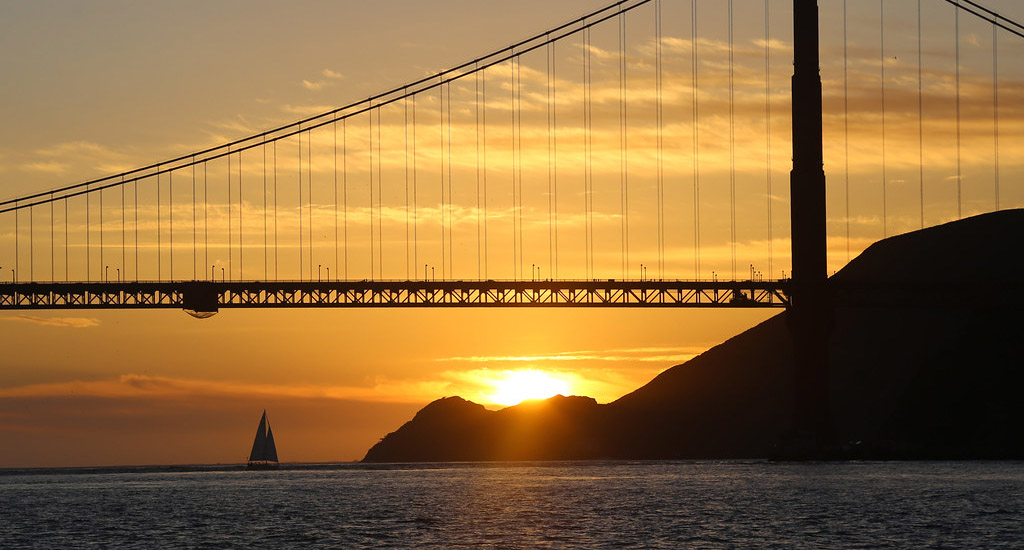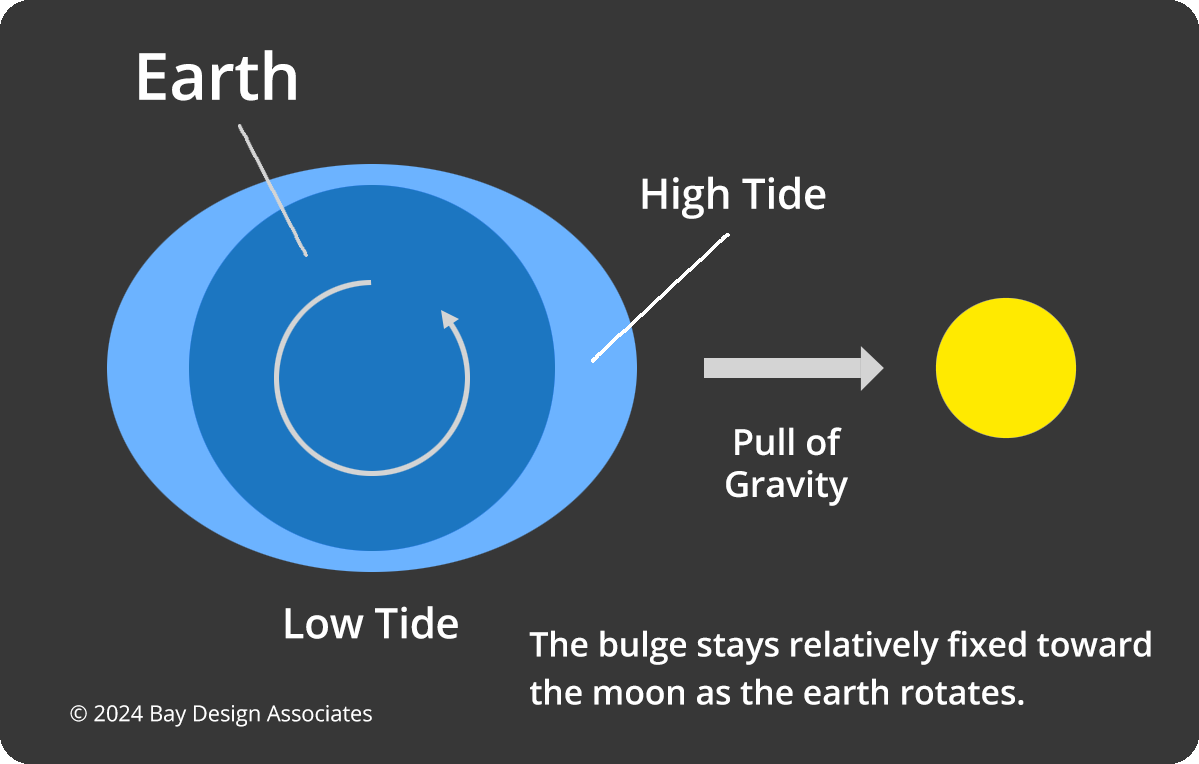Tides & Currents at the Golden Gate
Loading...
--/--/---- --:--
Current
5/9/2025 12:36 AM
Tide Predictions
Loading data...
Tides Data: NOAA Station 9414290 | View Map
Current Predictions
Loading data...
Currents Data: NOAA Station SFB1203 | View Map
Note: Times are at the Golden Gate. Heights are above MLLW.
signifies next event.

About Tides
Ever notice that low tides on San Francisco Bay usually occur around moonrise or moonset? Here are some articles on how tides work.

Tides are the periodic rise and fall of sea levels primarily caused by the gravitational pull of the Moon on Earth's oceans, with additional influences from the Sun's gravity, Earth's rotation, and inertia.
Gravitational Forces and Tidal Bulges
The Moon's gravitational pull creates a bulge in Earth's oceans on the side facing the Moon. This is known as the direct tidal bulge. The gravitational pull is strongest on the water closest to the Moon.
A second bulge forms on the opposite side of the Earth, known as the opposite tidal bulge, due to the inertia of the water.
These two tidal bulges result in two high tides and two low tides in most coastal areas over approximately 24 hours and 50 minutes.
The Role of Earth's Rotation and Delayed Impact
Earth's rotation causes different locations to move under the tidal bulges, creating periodic high and low tides.
However, due to friction and Earth's rotation, the tidal bulges are offset, leading to a delayed response.
The Sun's Influence
The Sun's gravitational force also affects tides, with its influence creating spring tides and neap tides during specific alignments with the Moon.
San Francisco Bay’s tides are shaped by a combination of forces, including ocean tides, freshwater flow from rivers, and seasonal rainfall. The bay’s unique geography and hydrology make its tidal system dynamic and complex.
Tidal Patterns in San Francisco Bay
Mixed semi-diurnal tides flow through the Golden Gate, slightly delayed and altered by shallower waters and frictional effects.
Influence of Rivers and Estuary Dynamics
Freshwater flows from the Sacramento and San Joaquin Rivers create a gradient where freshwater and seawater mix, modifying tidal behavior.
Effects of Heavy Rainfall
During the rainy season, increased freshwater input alters tidal ranges and salinity, affecting ecosystems and navigation.
Interaction of Tides, Rivers, and Rain
The interplay between ocean tides, river flow, and rainfall shapes the bay's tidal dynamics, with localized effects on different parts of the bay.
This web app was created by Bay Design Associates. Contact us with any suggestions or to become a sponsor.

